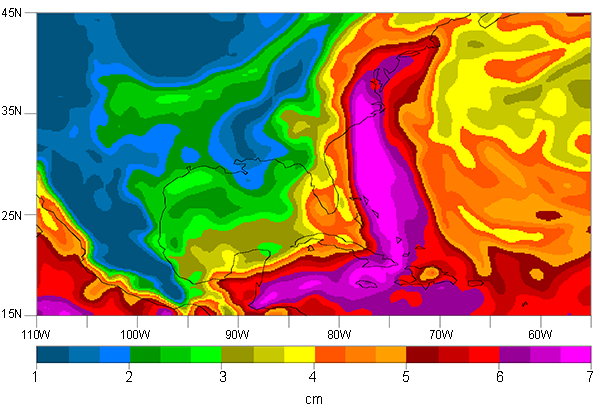Understanding the Role of Atmospheric Rivers in Heavy Precipitation in the Southeast US
April 25, 2016
A new study by HMT researchers at the NOAA Earth System Research Laboratory, performs an analysis of atmospheric rivers (ARs) as defined by an automated AR detection tool based on integrated water vapor transport in the Southeast U.S. (SEUS), and then investigates the connection of such features to heavy regional precipitation. Climatological water vapor and water vapor transport fields are compared between the U. S. West Coast and the SEUS, highlighting stronger seasonal variation in integrated water vapor in the SEUS, and stronger seasonal variation in IVT in the U.S. West Coast.
AR impacts on heavy precipitation in the SEUS are shown to vary on an annual cycle, and a connection between ARs and heavy precipitation during the non-summer months is demonstrated. When identified ARs are matched to heavy precipitation days (>100 mm day-1), an average match rate of ~41% is found.
Results suggest that some aspects of an AR identification framework in the SEUS may offer benefit in forecasting heavy precipitation, particularly at medium-longer range forecast lead times. However, the relatively high frequency of SEUS heavy precipitation cases in which an AR is not identified necessitates additional careful consideration and incorporation of other critical aspects of heavy precipitation environments such that significant predictive skill might eventually result.
Contact: Kelly Mahoney
